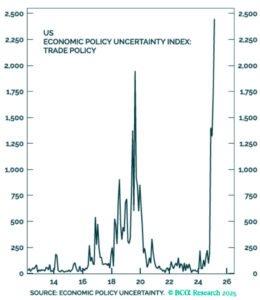When building an equity portfolio, sooner or later a fundamental question arises: how much weight should be given to each individual position in the portfolio? This question is by no means trivial, as the weighting influences not only the risk structure of a portfolio, but also its rebalancing logic, performance and robustness across different market phases.
Two strategies are particularly common:
- Market cap weighted: The largest companies receive the largest share.
- Equal weighting (1/N): Each security receives the same share of the portfolio, regardless of its size.
Many investors do not actively opt for one of these models. Instead, they invest in common index products such as ETFs – and thus automatically follow the market capitalization-weighted approach. However, this “market logic” is only one of several possible strategies. If you question it, you can make your portfolio more robust, broader and often also more profitable.
In this article, we compare both methods in detail – how they work, their advantages and disadvantages – and show why we deliberately use the 1/N approach for portfolio allocation in the Everon multi-factor and income strategy.
What does market capitalization weighting mean?
A market capitalization-weighted portfolio (also called “cap-weighted”) weights each company according to its current size on the capital market. The market capitalization is calculated as follows
Share price × number of outstanding shares = market capitalization
The higher this value, the greater the proportion of the company in the portfolio.
Practical example:
An ETF on the MSCI World invests around 4 to 5% in Apple alone. Other giants such as Microsoft, Amazon and Nvidia also have high single-digit shares. At the same time, hundreds of smaller companies together often make up less than 10% of the portfolio.
The basic idea behind this weighting is:
“The market knows best how much a company is worth. So we are guided by this collective valuation.”
This form of allocation is simple, scalable and cost-efficient. It reflects the structure of the overall market without any active intervention.
Advantages:
- High liquidity: the largest positions are also the most traded securities.
- Low rebalancing effort: The portfolio automatically adjusts to market movements.
- Market coverage: The portfolio reflects the “market” according to its current structure.
Disadvantages:
- Concentration risk: A few mega-caps dominate the portfolio.
- Procyclical: Stocks that have risen sharply are overweighted; weak stocks are squeezed out.
- Index distortions: Valuation bubbles (e.g. Tech 2000 or AI 2024) are not corrected, but amplified.
- Value stocks are disadvantaged: Small, solid and cheaply valued companies can hardly carry any weight.
Reading tip: The development of the correlation between equities and bonds

What does equal weighting (1/N) mean?
The 1/N approach follows a simple principle: every position in the portfolio is given the same weighting – regardless of size, sector or market capitalization. In concrete terms, this means that in a portfolio with 20 stocks, the weighting of each stock is exactly 5%.
How does this work in practice?
The weightings are constantly shifting due to price movements. An equally weighted portfolio must therefore be rebalanced regularly, ideally at regular intervals, such as monthly or at least quarterly. When rebalancing, overperforming stocks are trimmed back to their initial weighting (“profit-taking”) and underperforming stocks are increased accordingly. This creates a systematic anti-cyclical discipline.
Advantages:
- Better risk diversification: no one security can dominate the portfolio.
- Anti-cyclical rebalancing effect: Profits are realized, weaknesses are sat out in a disciplined manner.
- Greater focus on substance: even small, solid companies receive structural attention.
- Robustness over market cycles: Equally weighted portfolios often perform more stably in volatile phases.
Challenges:
- Higher administrative costs: rebalancing is active and requires monitoring.
- Transaction costs if the portfolio is not managed professionally: Trading costs may be incurred, especially for smaller securities.
- Deliberate deviation from the index: Equal weighting means a certain deviation from known benchmarks (e.g. MSCI World) by trying to outperform them.
An empirical look: How do the two approaches perform?
Numerous studies show that equally weighted portfolios can achieve better risk-adjusted performance over the long term.
- An influential study by DeMiguel, Garlappi and Uppal (2009) shows that a simple 1/N approach performs better on average than 14 complex allocation models, including mean-variance optimization. In particular, the 1/N approach shows the best risk-adjusted results.
- Also in practice: equally weighted indices such as the S&P 500 Equal Weight Index often achieve better risk-return ratios (Sharpe ratios) over longer periods, although they show higher volatility in the short term.
- Backtests on Swiss equity universes show that equal weighting reduces cluster risks and offers more stable performance trends, especially in sideways or correction phases.
Reading tip: Momentum as a return factor: the systematics behind relative strength.

Conclusion: Why we rely on equal weighting (1/N)
Market capitalization weighting is justified – especially for passive index tracking and cost-effective market coverage. But it has structural weaknesses:
- Overweighting of hypes,
- Neglect of valuation aspects,
- strong concentration on a few names.
The 1/N approach offers a deliberate alternative:
- It distributes risks more evenly,
- forces disciplined rebalancing,
- and promotes substance investments beyond the mainstream.
Our conclusion: Equally weighted portfolios are not only an academically elegant idea, but also a practically superior strategy for stable long-term asset growth. For this reason, we form our portfolio components for the multi-factor and income strategies with equal weighting.





